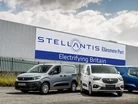Stellantis: Time to Invest €30bn in the EV Market

Electric car manufacturers continue to make commitments towards a low-carbon future. Between consumers, regulators, and investors, popular demand has pushed even traditional automakers such as Ford and Rolls-Royce to invest in alternative sources of energy. By securing 260+ GWh of battery capacity by 2030 and investing €30bn in EV programmes, Stellantis is the latest carmaker to join the global electric effort. ‘This transformation period is an opportunity to reset the clock and start a new race’, said Stellantis CEO Carlos Tavares.
Sure, the company has competitors. Auto manufacturers have realised that electric batteries will power their future. According to Metro, Renault will aim to make 90% of its main brand models all-electric by 2030; Volkswagen will push for 55% of its total European sales to be electric by 2030; and General Motors will sell all light vehicles with zero tailpipe emissions by 2035. But that won’t stop it.
Stellantis Arrives on the Scene
You may have never heard of the world’s fourth-greatest auto manufacturer. That’s because Stellantis was formed back in January when Fiat Chrysler and PSA merged. But it’s joining the ranks of EV manufacturers fast. All fourteen of its vehicle brands, from Peugeot to Ram, will eventually offer full-on electric vehicles, and by the end of 2021, Stellantis will sell hydrogen fuel-cell vans. These tactics are part of a master plan to compete with internationally-renowned EV makers such as Tesla.
At this point, the company’s future tactics centre around new battery plants throughout Europe and North America. PSA, prior to becoming part of Stellantis, had excellent plans for electric. One of the group’s five battery plants will be built in Italy, another in North America—potentially the U.S.—and two more in Germany and France. ‘Stellantis seems to have put in place a unified platform strategy’, said IHS analyst Romain Gillet. ‘This allows it to benefit as fast as possible’.
What’s the Strategy?
Thirty billion euros is a conspicuous amount. In addition to new battery plants, Stellantis will also invest in supplier partnerships. The company has already signed two memorandums of agreement (MOAs) with North American lithium brine process companies to ensure that it has enough raw lithium to manufacture its batteries. Already, it’s partnered with Automotive Cells, Contemporary Amperex Technology, BYD, SVOLT, Samsung SDI, and LG Chem’s Energy Solution.
Now ahead to the future. From 2020 to 2024, Stellantis intends to cut how much battery packs cost by at least 40%, changing battery compositions. (The group will integrate a nickel alternative to cobalt and create a high energy-density chemical makeup.) Such steps will help its team secure 260+ GWh of battery capacity by 2030, build EVs with a range of 500 to 800 kilometers per charge, and compete in electric energy.
‘The strategy we laid out focuses the right amount of investment on the right technology’, said Tavares. ‘Our commitment is to the customer...to offer iconic vehicles that have performance, capability, style, electric range, and comfort’.
Featured Articles
SAP has announced it has appointed a new President for a newly-created EMEA region, aiming to make the most of the opportunities of cloud and AI technology
Technology giant SAP has expanded its portfolio with the acquisition of LeanIX, a leader in enterprise architecture management (EAM) software
To help businesses achieve increased productivity, Siemens and Microsoft are deepening their partnership by showcasing the benefits of generative AI



